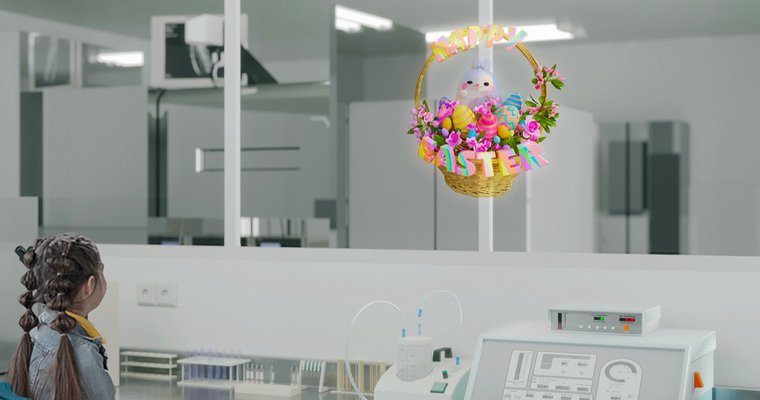
The Tartu University Hospital in Estonia has released a case study revealing that holographic cartoon characters, created by Hypervsn, can help to alleviate fear and worry in young patients, and make procedures easier for children and doctors, according to Hypervsn’s website.
KNM EESTI, the Hypervsn distributor in Estonia, and Tartu University Hospital demonstrated the holographic cartoon characters in the neurology department’s procedure room, to see if it had a positive effect.
Fifty-one children, with 28 different diagnoses, participated in the study and pain levels were assessed by the nurses with the FLACC pain scale, before and after looking at the 3D visuals. The Hypervsn Solo M was displaying 31 different 3D animations of cartoon characters, magical forests, Easter bunnies etc.
The results showed that due to the holographic distraction, children’s pain levels were reduced by 95%. Not only did it significantly reduce the children’s fear, but also increased the work efficiency of the doctors and nurses as kids sat still and medical staff didn’t have to deal with their fear. As a result, they can also attend to more patients daily.
“After the experiment several nurses shared how upon entering the room, kids were tense and slightly shaking and then, after looking at Hypervsn, they would smile, relax and start guessing what it is they’re seeing,” Alfred Dudar, co-founder of KNM EESTI, said on the website.
After the successful study, the holographic devices are now used in procedure and operations rooms in six of the largest hospitals in Tallinn, Tartu and Parnu with more interest coming from hospitals in Estonia.
Hypervsn, based in London, has developed the Integrated 3D Holographic Display System. Founded in 2011, Hypervsn holographic displays have been used for digital signage campaigns, holographic display billboards, DOOH media, activation events, corporate receptions areas and 3D point of sale displays.
Reference : DigitalSignageToday

